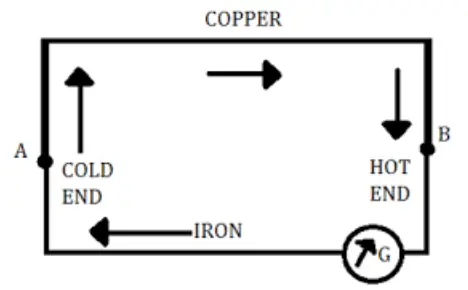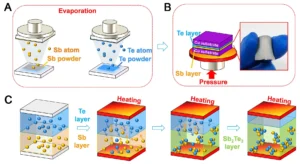In the realm of thermoelectricity, the Seebeck effect stands as a cornerstone phenomenon, elucidating the intriguing relationship between heat and electricity. Named after German physicist Thomas Johann Seebeck, who first discovered it in 1821, this effect has since become a fundamental principle underlying the function of thermoelectric devices. From powering space probes to enhancing energy efficiency in industrial processes, the Seebeck effect continues to captivate scientists and engineers alike with its potential applications.
Understanding the Seebeck Effect:
At its core, the Seebeck effect describes the generation of an electromotive force (EMF) or voltage across a conductor when there exists a temperature gradient along its length. In simpler terms, when one end of a conducting material is heated while the other end is cooled, a potential difference is established, leading to the flow of electric current if the circuit is completed.
The magnitude of the generated voltage (V) depends on the temperature difference (ΔT) across the material and is proportional to the Seebeck coefficient (S) of the material. Mathematically, the relationship can be expressed as:
V = S⋅ΔT
The Seebeck coefficient represents the material’s ability to generate a voltage per unit temperature gradient and is measured in microvolts per Kelvin (μV/K). Materials with higher Seebeck coefficients are more efficient at converting heat differentials into electricity.
Applications of the Seebeck Effect:
- Thermoelectric Generators (TEGs): One of the most prominent applications of the Seebeck effect lies in TEGs, devices designed to convert waste heat into usable electrical power. In automotive exhaust systems, for instance, TEGs can harness the heat generated by the engine to produce electricity, thereby improving fuel efficiency and reducing emissions.
- Space Exploration: The Seebeck effect plays a vital role in powering spacecraft and satellites, where traditional energy sources may be limited or impractical. Radioisotope thermoelectric generators (RTGs) utilise the heat generated by decaying radioactive isotopes to produce electricity, enabling long-duration missions in remote environments such as outer space.
- Wearable Technology: In the realm of wearable technology, thermoelectric materials leveraging the Seebeck effect can potentially be integrated into clothing or accessories to harvest body heat and power small electronic devices like fitness trackers or smartwatches. This application holds promise for enhancing the autonomy of wearable gadgets, reducing the need for frequent recharging.
- Industrial Process Optimisation: Industries that produce significant amounts of waste heat, such as steel manufacturing or power generation plants, can benefit from thermoelectric systems based on the Seebeck effect. By capturing and converting excess heat into electricity, these systems can improve overall energy efficiency and reduce operational costs.
Example Illustration:

Consider a simple demonstration of the Seebeck effect using two different metals, copper (Cu) and iron (Fe). Suppose we form a closed loop circuit with a copper wire and an iron wire, with one end of each wire connected. If we heat the junction where the two metals meet while keeping the other ends at a lower temperature, an EMF is generated across the circuit due to the temperature gradient. This voltage can then drive an electric current through an external load, demonstrating the conversion of heat into electricity.
Conclusion:
The Seebeck effect stands as a testament to the intricate interplay between thermal and electrical phenomena, offering a pathway towards sustainable energy generation and utilisation. As researchers continue to explore novel materials and engineering techniques, the practical applications of this phenomenon are poised to expand, driving innovation across diverse fields and fostering a more energy-efficient future.




